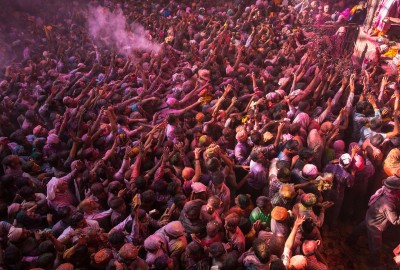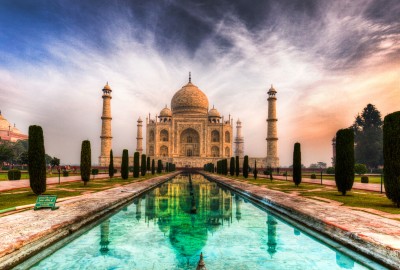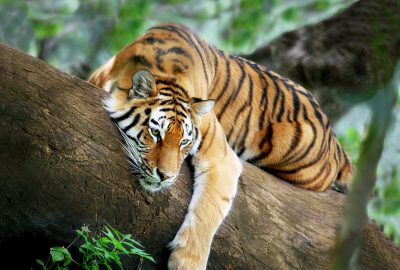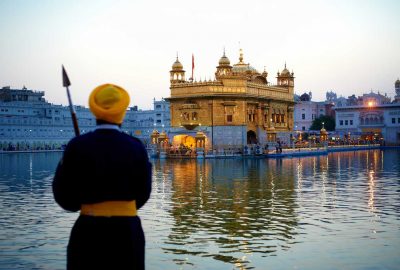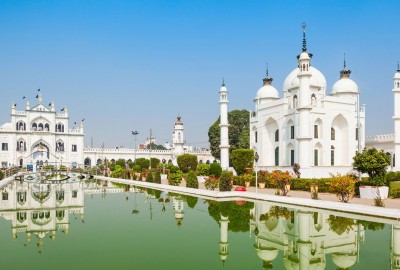15 DAYS & 14 NIGHTS
DELHI I LUCKNOW I VARANASI I AGRA I FATEHPUR SIKRI I JAIPUR I SANGANER I UDAIPUR I AHEMADABAD I MUMBAI
The textile pattern and designs of India are world best. Brocade and Chicken Kari works are unique to India. In this tour we shall take you to the cities like Lucknow and Varanasi. The tour would also give you a chance to explore India through its unique lifestyle.
Detailed Itinerary
Meet & assistance on arrival by our travel executive
Transfer to your Hotel. (Check-in time is 12 noon)Briefing of the tour by the executive
Delhi – discover that India’s capital is sprinkled with glittering gems: captivating ancient monuments, magnificent museums, a vivacious performing-arts scene and some of the subcontinent’s yummiest places to eat.Overnight at hotel
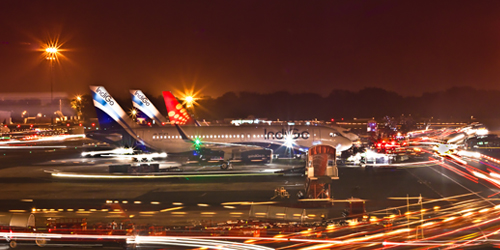
Depart for half day sightseeing tour of New Delhi.
Delhi, the capital of India comprises of conspicuously contrasting Old and New Delhi. Old Delhi was the capital of Muslim India between the 12th and 19th centuries and one can find mosques, monuments and forts related to Muslim history. New Delhi is the imperial city created as India's capital by the British intricately planned and comprises of imposing buildings displaying various modern style of architecture.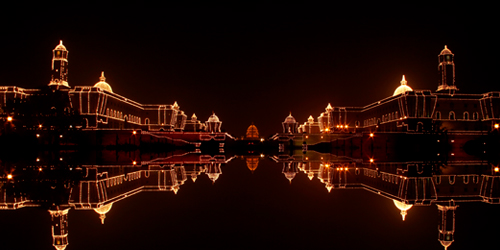
Humayun's Tomb
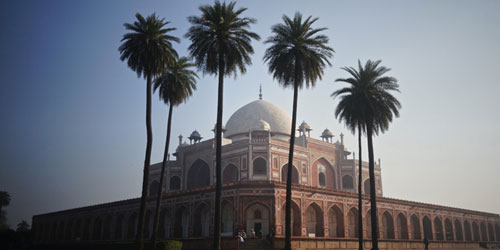
Qutab Minar
Afternoon visit Sanskritti Museum of Textile.
Overnight at hotel
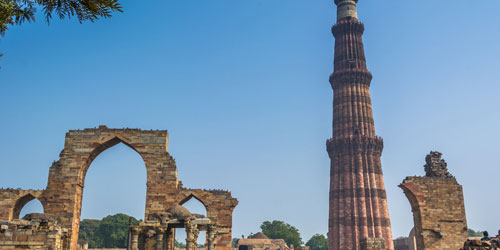
Depart for half day sightseeing tour of Old Delhi visiting Red Fort (UNESCO WORLD HERITAGE SITE - Red Fort was built by the mughal emperor famous for its architectural wonders one of which is Taj Mahal - Shah Jahan. Red Fort is famous for its delicately carved inlaid and Royal chambers) – Monday closed.

Jama Masjid
Then visit Raj Ghat (The cremation ground of the father of the Nation Mahatma Gandhi)
Afternoon visit National Handicrafts & Handlooms Museum.Overnight at hotel
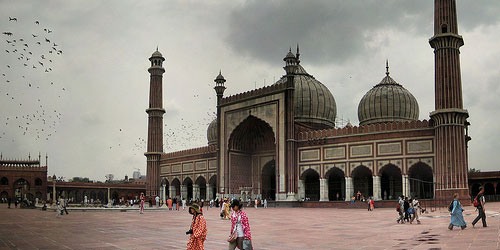
Meet/Assist on arrival and transfer to Hotel.
Lucknow, the capital of Uttar Pradesh, was also the capital city of the Nawabs of Awadh. The city was a favorite of the nawabs and many magnificient buildings and monuments have been built by them. Situated on the banks of River Gomti, the city of Nawabs is famous all over the world for its etiquettes and Tehzeeb or the graceful and polite behavior. Famous for its lovely monuments, architecture, dance and handicrafts, Lucknow, the capital of Uttar Pradesh, is today one of the growing metropolitan cities of India. Known for its Urdu poetry or Shayari, the city offers its travelers a perfect blend of its glorious past and the modern present.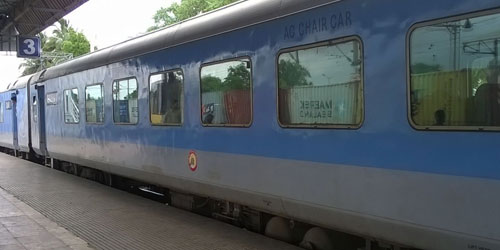
Lucknow
Also visit the self employed women’s center – famous for its hand embroidery. You will of course get a chance to buy some of this great embroidery.
Overnight at hotel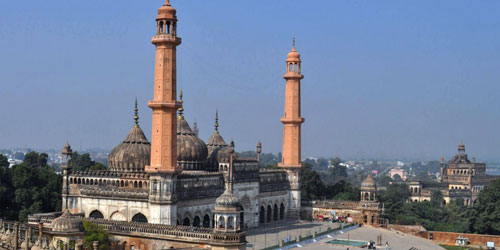
Depart for half day sightseeing tour of Lucknow visiting
Bada Imambada or Asafi Imambada (Imambada: patriarch's place) is an important tourist attraction of Lucknow. It was built by the then Nawab Asaf-ud-Daula in 1784 to provide succor to the famine-stricken people. Apart from the galleries in the interior, there is no woodwork anywhere. The interior vaulted hall, measuring 162 feet long, 53 feet broad, and 50 feet high is said to be one of the largest apartments of its kind in the world. From the outside, a staircase leads to a series of artfully designed labyrinths (bhoolbhulaiyan) where it is very easy to get lost! You could wander through the zigzag narrow galleries for hours without finding your way out! It's a very eerie sensation, moving towards the sunlit corridors that seem to be going out, only to find that you are actually deeper in the labyrinth! Most visitors therefore are only allowed inside with guides who are, quite amazingly, familiar with the maze.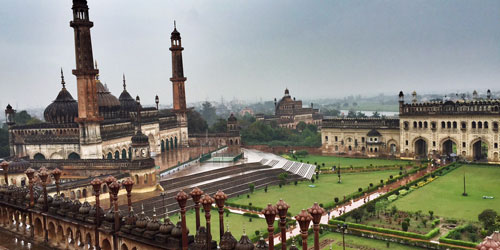
Chota Imambada
Afternoon drive to Varanasi and check in at Hotel.
Varanasi, the city was founded by the Hindu deity, Lord Shiva, around 5,000 years ago, thus making it one of the most important pilgrimage destinations in the country. It is one of the seven sacred cities of Hindus. Many Hindu scriptures, including the Rigveda, Skanda Purana, Ramayana, and the Mahabharata, mention the city.Afternoon walk through the bazaar of Varanasi a heaven for the rich merchant wholesale markets for brocade and Banarasi Sari.
Overnight at hotel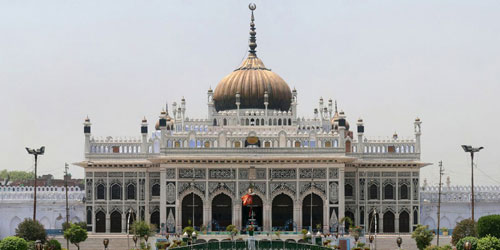
Return to hotel for breakfast
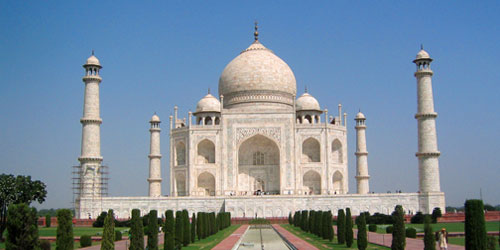
Sarnath
fternoon is free to relax.
In the late evening transfer to Varanasi train station in time to board Marudhar Express (Travel in AC 2 Tier Sleeper Class) to Agra.Overnight in the train
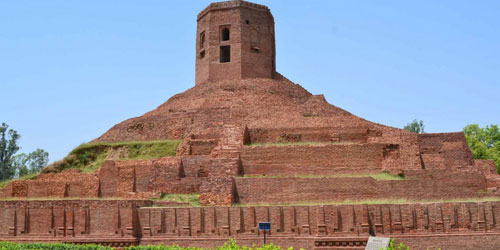
Meet/Assist on arrival and transfer to Hotel.
Agra is famous as being home to one of the Seven Wonders of the world - The Taj Mahal. The architectural splendor of the Moslems, the fort and the palaces is a vivid reminder of the opulence of the legendary Mughal empire, of which Agra was the capital in the 16th and early 17th centuries. While it's significance as a political center ended with the transfer of the capital to Delhi in 1634 by Shah Jaha, it's architectural wealth has secured it's place on the international map.In the afternoon you will be taken on a half day sightseeing tour of Agra visiting
Taj Mahal (UNESCO WORLD HERITAGE SITE)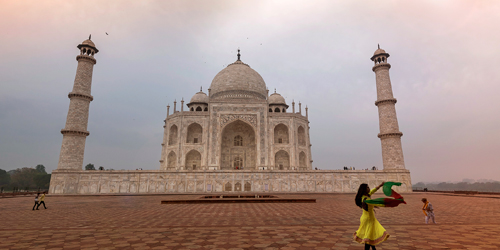
AGRA FORT
Also visit local market and a marble factory where you can actually see the inlay work being done on marble like it was done for Taj in the past.
Overnight at Hotel
Depart for Jaipur en route visiting Fatehpur Sikri. – the Mughal Emperor Akbar built Fatehpūr Sikrī about 35 km from Agra, and moved his capital there. Later abandoned, the site displays a number of buildings of significant historical importance. A World Heritage Site, it is visited by most tourists. The name of the place came about after the Mughal Emperor Barbar defeated Rana Sanga in a battle at a place called Sikrī . Then the Mughal Emperor Akbar wanted to make Fatehpūr Sikrī his head quarters, so he built a majestic fort; due to shortage of water, however, he had to ultimately move his headquarters to Agra Fort.
Continue your drive to Jaipur and check in at Hotel.Jaipur was founded in 1727 by Maharaja Sawai Jai Singh II and is the first well planned city of India, located in the desert lands of India, Rajasthan. The city which once had been the capital of the royalty now is the capital city of Rajasthan. The very structure of Jaipur resembles the taste of the Rajputs and the Royal families. In the present date, Jaipur is the major business centre for the natives of Rajasthan with all requisites of a metropolitan city.
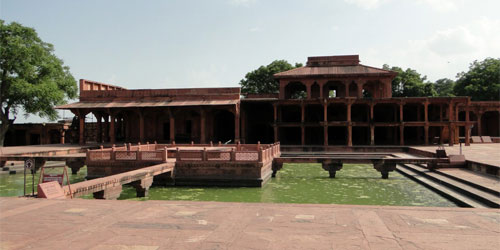
Saganer
Return to Hotel.
Overnight at Hotel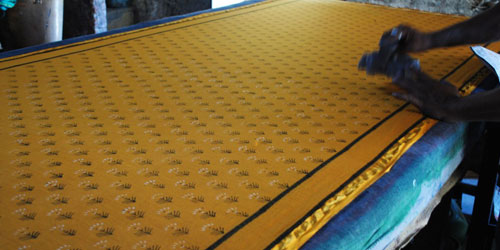
Pronounced ‘Amber’ and meaning ‘High’, this wraithlike fort – palace beautifully illustrates Rajput artistry in the faded shades of the reddish pink. Situated on the rugged hills 1 Km north of town, Amber was once the ancient capital of the Jaipur state.
Depart for Amber fort (Situated atop the Aravali hills, it is the ancient capital of Jaipur and a magnificent example of Rajput architecture)We ascend to the fort on Elephant's back and come down in Jeep.

Hawa Mahal- Palace of Winds
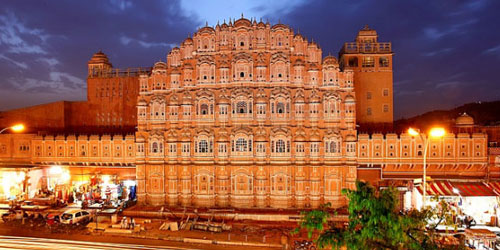
Jantar Mantar
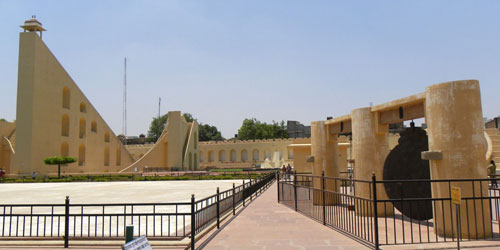
City Palace Museum
The tour of Jaipur is not complete without shopping as Jaipur is known as a shopper’s paradise famous for jewellery, handicraft, carpet, blue pottery and textiles
Overnight at Hotel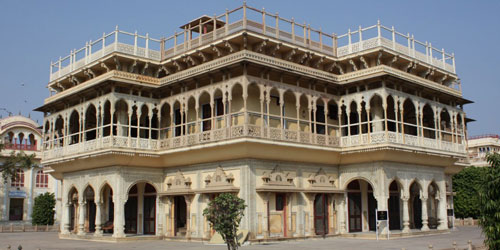
Depart for Udaipur and check in at Hotel.
Udaipur was the capital of the Rajpur kingdom of Mear, ruled by the Sisodia clan. The founder of Udaipur was Rana Udai Singh. The ancient capital of Mewar was Nagda, located on the Banas River northeast of Udaipur. Legend has it that Maharana Udai Singh came upon a hermit while hunting in the foothills of the Aravalli Range. The hermit blessed the king and asked him to build a palace on the spot and it would be well protected. Udai Singh established a residence there. In 1568 the Mughal emperor Akbar captured Chittor, and Udai Singh moved the capital to the site of his residence, which became the city of Udaipur. As the Mughal empire weakened, the Sisodia ranas, and later maharanas, reasserted their independence and recaptured most of Mewar except the fort of Chittor. Udaipur remained the capital of the state, which became a princely state of British India in 1818. After India's Independence in 1947, the Maharaja of Udaipur acceded to the Government of India, and Mewar was integrated into India's Rajasthan state. The city's pride , the 'Lake Palace' was once a prison.Rest of the day is free to relax.
Overnight at Hotel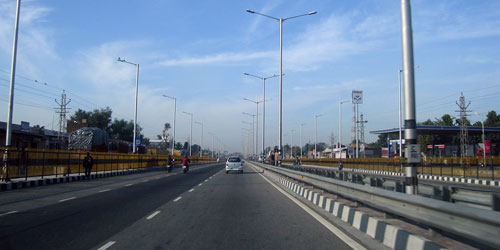
Depart for half day sightseeing tour of Udaipur – also known as City of Lakes visiting City Place - standing on the east bank of Lake Pichola is a massive series of palaces built at different times from 1559. The balconies of the palace provide panoramic views of "Jag Niwas" (the Lake Palace Hotel), Jag Mandir on one side and on the other the city of Udaipur. Its main entrance is through the triple-arched gate - the Tripolia, built in 1725. The way now leads to a series of courtyards, overlapping parations, terraces, corridors and gardens. There is a Suraj Gokhda, where the maharanas of Mewar presented themselves in the times of trouble to the people to restore confidence. The Mor-chowk (Peacock courtyard), gets its name from the mosaics in glass decorating its walls. The chini chitrashala is noteworthy while a series of wall paintings of Krishna are on display in Bhim Vilas. There are numerous other Palaces such as Dilkhush mahal, Sheesh mahal, Moti mahal and Krishna vilas - in memory of a princess of striking beauty who poisoned herself to avert a bloody battle for her hand by rival princes. Now the palace contains many antique articles, paintings, decorative furniture and utensils and attracts thousands of visitors every day
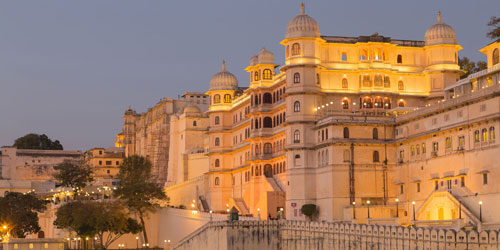
Sahelion ki Bari
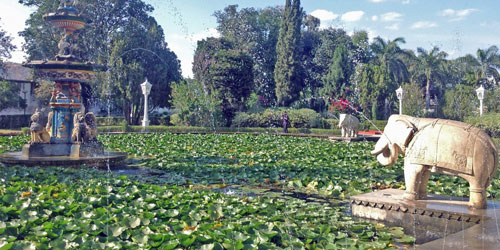
boat ride on Lake Pichola
Overnight at Hotel
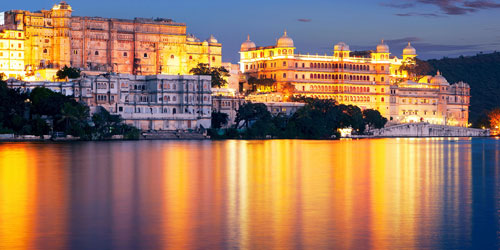
Depart for Ahmedabad and check in at Hotel.
Ahmedabad was founded in 1411 by Sultan Ahmed Shah to serve as the capital of the Gujarat Sultanate. The city is named after its founder. Under British rule, a military cantonment was established and the city infrastructure was modernised and expanded. Although incorporated into the Bombay Presidency during the British rule in India, Ahmedabad remained the most important city in the Gujarat region. The city established itself as the home of a booming textile industry, which earned it the nickname "the Manchester of the East."[4][5] The city was at the forefront of the Indian independence movement in the first half of the 20th century.[6] It was the centre of many campaigns of civil disobedience to promote workers' rights, civil rightsand political independence.Rest of the day is free to relax.
Overnight at Hotel
Depart for sightseeing tour of Ahmedabad visiting Sabarmati Ashram - this This ashram was Gandhi's headquarters during the long struggle for Indian independence. His ashram was founded in 1915 and still makes handicraft, handmade paper and spinning wheels. Gandhi's spartan living quarter are preserved as a small museum and there is a pictorial record of the major events in his life. The ashram is open from 8.30 am to 6.30 pm (7 pm between April and September). Admission is free. There is a sound-and-light show for a small charge at 6:30 pm (in Gujarati) and 8:30 pm (in English on Sunday, Wednesday and Friday and in Hindi on the other nights. The beautiful ashram complex of Ahmedabad, with it's shady trees populated by thousands of parakeets, beeeaters, sunbirds and squirells, offers a refuge from the loud streets of the city, and is one the foremost tourist attractions of Ahmedabad.
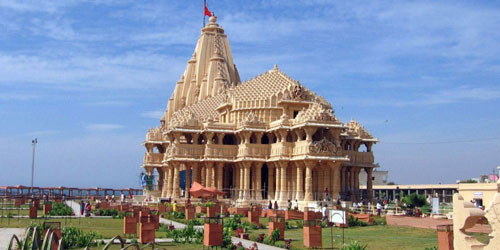
Jama Masjid

Shreyas Folk Museum
Exhibiting the finest arts and crafts of Gujarat, Shreyas Folk Museum is situated 2.5km west of Sabarmati. Set in suburbs of Ambavadi in Ahmedabad, the museum has a huge display of textiles and clothing in Gujarat. One of the major attraction of the museum is a complete skeleton of an elephant with a height of about 3.19m. Old coins, weapons, toys, costumes, masks, puppets, musical fountains and animal caparisons also lure foreign tourists.
The museum remains open daily from 10:30am-05:30pm except Mondays and public holidays. It remains close during lunch hours .i.e. 01:30pm to 02:00pm. also visit National Institute of Design. We shall also try and take the permission to visit Calico Museum.Overnight at Hotel
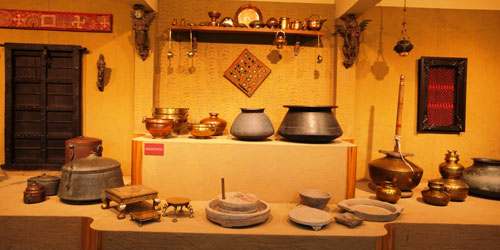
Transfer to Ahmedabad airport in time to connect flight to Mumbai.
Meet/Assist on arrival and transfer to Hotel.Bombay, is the capital of the Indian State of Maharashtra. The city is the second most-populous in the world; with approximately 14 million inhabitants along with the neighbouring cities of Navi Mumbai and Thane it forms the world’s 4th largest urban agglomeration, with around 19 million people. Mumbai lies on the west coast of India and has a deep natural harbour.
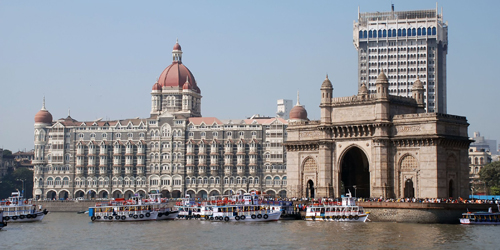
Gateway of India
Gateway of India Mumbai's most famous monument, this is the starting point for most tourists who want to explore the city. It was built as a triumphal arch to commemorate the visit of King George V and Queen Mary, complete with four turrets and intricate latticework carved into the yellow basalt stone. Ironically, when the Raj ended in 1947, this colonial symbol also became a sort of epitaph: the last of the British ships that set sail for England left from the Gateway. Today this symbol of colonialism has got Indianised, drawing droves of local tourists and citizens.
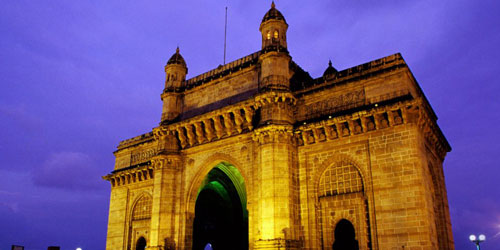
Marine Drive

Crawford Market

Mani Bhavan
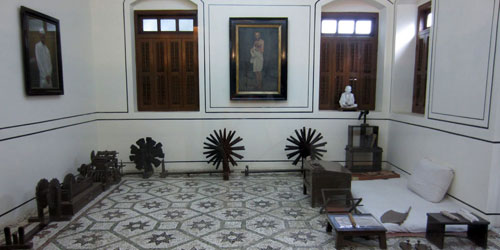
Dhobi Ghat
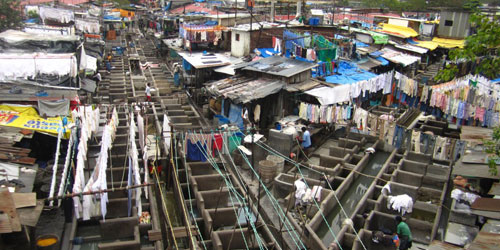
Hanging Garden
Overnight at Hotel

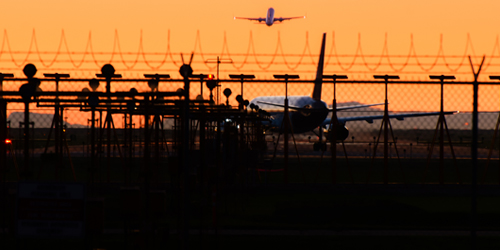
COST & INCLUSIONS
| Premier | Premier | Luxury | Comfort | |
|---|---|---|---|---|
| Summer | US$4725 | US$4399 | US$2790 | US$2667 |
| Winter | US$6555 | US$6034 | US$3082 | US$2955 |
| Delhi | The Oberoi | Taj Palace Hotel | The Lalit | Surya Hotel |
| Lucknow | Vivanta by Taj | Vivanta by Taj | Renaissance | La Palace Park Inn |
| Varanasi | Radisson Hotel | Nadesar Palace | Ramada Hotel | Hindustan International |
| Agra | Oberoi Amarvilas | ITC Mughal | Trident | Crystal Sarovar |
| Jaipur | Oberoi Rajvilas | Taj Rambagh Palace | Trident | Holiday Inn |
| Udaipur | Oberi Udaivilas | Taj Lake Palace | Trident | Udaikothi |
| Ahmedabad | Oberi Udaivilas | Taj Lake Palace | Trident | Udaikothi |
| Mumbai | The oberoi | Taj Mahal Palace & Tower | Trident | Fariyas Hotel |
 Tour Includes
Tour Includes
Share twin accommodation with breakfast
Transfers & sightseeing by Air Conditioned vehicle
Services of English speaking local guides
Rickshaw ride in Old Delhi
Train ticket in AC chair car for travel Delhi/Lucknow
2 Tier AC Sleeper class ticket for travel Varanasi/Agra
Elephant ride at Jaipur
Present Applicable taxes as on 15th, Jan 2020
 Tour Excludes
Tour Excludes
Entrance tickets to Monuments
International Airfare
Domestic Airfare
Visa fee & Insurance
Items of personal nature i.e. laundry, telephone, camera fee, drinks & tips etc


